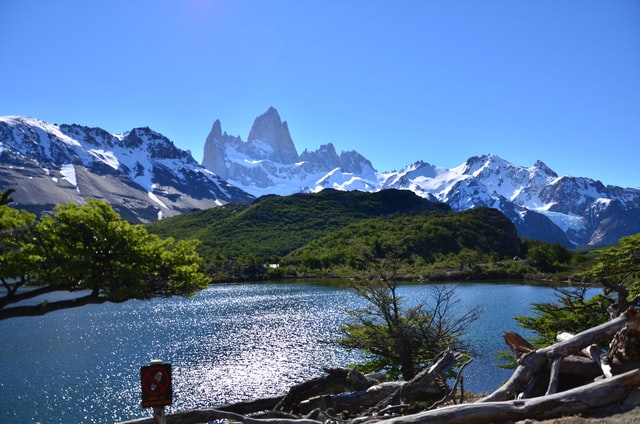Argentina Travel: 6 Things You Won’t Find in a Travel Guide

 I have always been the over-prepared girl. Whether it came to school, work, or planning trips, I ensured that I was prepared for whatever might happen. So, of course I prepped for my internship abroad, and spent weeks poring over travel blogs, books, and guide information about my new home, Buenos Aires, Argentina. As I boarded the plane from JFK Airport, I felt that I was more than prepared to face any culture shock and differences in the coming months abroad.
I have always been the over-prepared girl. Whether it came to school, work, or planning trips, I ensured that I was prepared for whatever might happen. So, of course I prepped for my internship abroad, and spent weeks poring over travel blogs, books, and guide information about my new home, Buenos Aires, Argentina. As I boarded the plane from JFK Airport, I felt that I was more than prepared to face any culture shock and differences in the coming months abroad.
While I was certainly successful during my time in South America, I noticed that many of the texts I had read made no mention of certain things that I learned which were key to adapting to Argentine culture. Thus, I give you the 6 things I wish I knew before my Argentina travel experience:
Argentina Travel: 6 Things You Won’t Find in a Travel Guide
1. You won’t eat just meat.
Argentina is known for its huge cattle production and delicious steaks. Carnivores: you can eat as much meat as you want. The country is well known for asado (roast) and parrillas (grills). Red meat is a huge staple in the diet here and you can’t walk a block without seeing a parrilla. I’ve had a few steaks here, each one better than the last. If you’re really looking for a juicy, fresh steak, I suggest taking a trip to a gaucho ranch for a weekend.
But, for my vegetarian friends, there are plenty of options for you too! Actually, my first homestay was with a family of vegetarians. We ate polenta, salad, milanesa de soja, and lots of other veggie and soy-based dishes. There are many salad bar restaurants throughout the city, fresh fruit and vegetables in grocery stores, and, my favorite, vegetarian empanadas–try humita (a corn mash) or roquefort (blue cheese). Additionally, pizza and ñoqui are big deals here – there are plenty of food options for all palates and needs!
2. Public transportation is the only way to get around in the larger cities.
Cars, buses, and taxis pack the city – it’s amazing how anyone can actually maneuver in these busy streets. Yet, I am absolutely in love with how easy it is to get around Buenos Aires. There are hundreds of buses, or colectivos, that run 24/7 and can take you around the city for just a few pesos, as well as an extensive underground rail system, called Subte (short for subterráneo), that can get you to the further barrios much more quickly and for only 2 pesos more than a bus. Additionally, there is a train system in Retiro that will take you to the provinces outside of the city, like Suárez or Tigre, for only 2 pesos each way.
But, while these modes of transportation are generally incredibly useful, sometimes, they can cause quite the headache.?For example, from my house to work is a 15-minute bus ride on the 100 line. Well, it should be a 15-minute bus ride. The 100 line has been under maintenance for the past two weeks thus making just my wait to catch a bus sometimes 20 minutes-long. Additionally, you really need to know exactly where you’re going, and then two streets before and after your intended location, just in case you can’t get off at the stop you wanted. Buses can fill up like sardines in a tin. In fact, I once got caught right where the middle doors open and was smashed for what seemed like an eternity between a rail and a hydraulic mechanism.
Argentina Travel: 6 Things You Won’t Find in a Travel Guide.
Concerning the Subte, I love the ease of jumping on one of these trains. They are quick, efficient, and easy to use. Yet, it also has a few pitfalls. To begin, look at the difference between the C line and the A line: The C line leads to rougher parts of town (and also my house) whereas the A line rides through the touristy, main street of the city. There is a clear difference in how the city keeps up on the maintenance of this line that, at least for me, denotes the binary of rich and poor.
Additionally, like buses, Subte cars pack up tightly with people. On the day of the World Cup final, my roommate and I grabbed the C line back to our house and were so packed in we couldn’t breathe or lift our arms up to grab a handrail. Fortunately, a big man behind me realized that I was a loose cannon, grabbed me, and held me tight against him. Though I was alarmed at first, it was actually really nice not to fly into other people.
3. People are ready and excited to help you.
The people, or porteños, of Buenos Aires are passionate, loud, creative, and, for the most part, wonderful. I love how up-to-date everyone is on news, culture, music, etc. Even more, most locals actually want to help you and are curious about why you’re visiting their city.
During my first weeks in Argentina, I got helplessly lost walking to a bar from work and somehow ended up in the middle of the fabric district. I was 100% sure that I was about to spend my last few minutes of life wandering between the giant spools of fabric that covered the storefront windows.
But, I mustered up some confidence and approached an older man, suspiciously dressed in a trench coat, and asked him for directions. Not only did he point me along the right path but he also offered to walk me to my destination and even told me I blended in right among the Argentines!
Yet, not everyone is as helpful as my trench coat friend; since everyone wants to help, sometimes someone will simply give you the wrong answer and pretend it’s right. Be sure to ask a few different people to make sure you’re heading in the right direction!
Another example of “Argenkindness”: We were shooting a video for work and this tango dancer grabbed me off the streets of San Telmo while filming the final scene!
4. Before leaving for your Argentina travel adventure, bring as much cash as possible.
I was advised to bring a decent amount of cash before I left home. I went back and forth on how much to bring, whether it be $500 or $1000. I settled on $800 since it was a happy medium and I really only felt comfortable carrying that much on me on an overnight plane ride. I knew I was going to be traveling, buying souvenirs, and would probably be going out a lot. I figured since the exchange rate I saw online at the time was $10 ARP to $1 USD, with a cup of coffee averaging about $13 ARP, I figured I’d be pretty set and could use my credit cards to book travel and if I ran out of cash.
I quickly learned that this was a mistake. Argentina is run on a cash system – very few places accept credit cards and the international fee on processing a credit card charge can be up to 8%. Also, only pesos are allowed in Argentina – selling or buying foreign currency is technically illegal. With that illegality in mind, the government will buy your USD at a rate of $8 ARP for $1 USD. This 8:1 is the official rate; however, you can sell your dollars at the blue rate (just a nicer name for the black market) at a rate of $13ARP to $1USD. Although it is illegal, no one cares about blue market exchanges. There are plenty of places to exchange, as long as you have the bills in hand.
After about a month, I was down to my last $100 USD. Since you can’t get USD in Argentina and taking money out of an Argentine bank would give you the 8:1 rate and add an international surcharge, I took a trip to Uruguay in order to get more USD. So, the point: before you travel to Argentina, bring as much cash as you can, or plan to go to Uruguay once a month!
5. “Argentime” is a real thing and it will frustrate you.
Argentines are notoriously late. If you make plans to meet at 1PM, a native Argentine will show up at 1:30 PM. There’s a slower pace of life here, which is certainly charming, though at times rather irksome, too. Be sure to relax and enjoy the extra time to yourself. Additionally, if you plan is to grab a cup of coffee, be prepared to spend the next three hours enjoying that cup. Argentines love talking, relaxing in cafés, and sharing stories over drinks. It’s not uncommon to spend half a day in a shop.
6. Prepare yourself for European fashion.
Check out what’s going on in Europe before you start packing for Argentina. In my opinion, Buenos Aires seems a bit stuck in the 1990s when it comes to fashion. Never have I seen so many platform shoes, scrunchies and zippered jean jackets. Everyone dresses in classic colors – the more black the better. I made the mistake of only bringing my pink North Face jacket. It’s pretty obvious you’re a tourist if you’re in anything other than dark clothing.
There you have it – the tips for living in Argentina that you won’t find in a travel guide. No matter how you choose to dress, what you choose to eat, or who you talk to, be sure to get out and explore this amazing country and experience all it has to offer!








